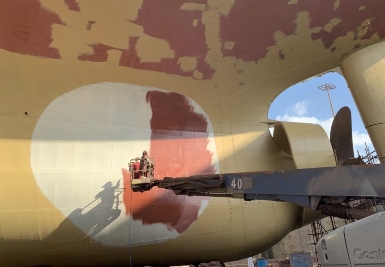
A new autonomous landing solution for offshore structures, called the Barge Master gangway, is designed to significantly improves both safety and performance.
Through a combination of radar technology, cameras and sensors, Bosch Rexroth’s system automatically attaches the landing from the ship to the required site without the need for manual input. This means that the operation is consistent and reliable, regardless of weather and ocean conditions.
After the automated landing procedure, the Barge Master gangway is held safely in place through a combination of motion compensation and the ship’s dynamic positioning.
“There are a number of benefits to the autonomous landing system,” says Rene Coppens, Business Development Manager for Continue reading “Autonomous Barge Master gangway landing solution set to improve safety for offshore structures”










